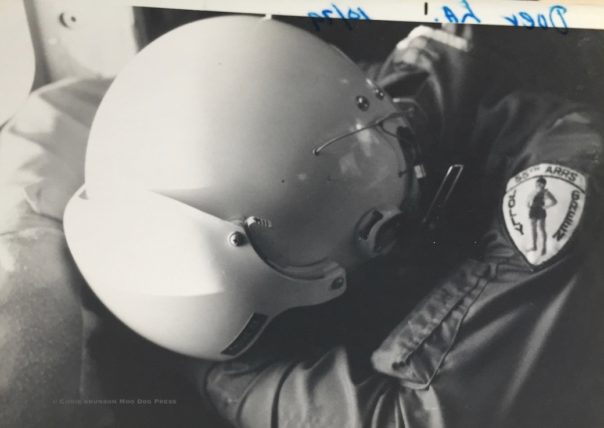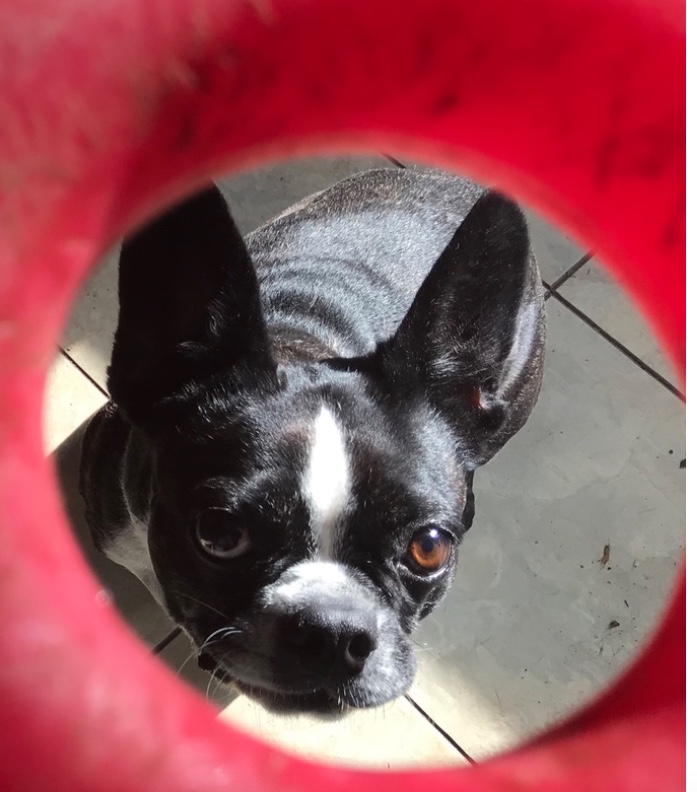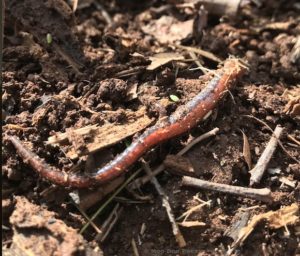Storm Journal COVID-19: ‘That Others May Live’ Forward, Back
“All things are hidden, obscure and debatable if the cause of the phenomena is unknown, but everything is clear if this cause be known.” — Louis Pasteur
March marches by. So does life in every form. Now we are the sum of all of our choices.
A virus replicates, mutates, travels and is indifferent to posturing, ego, age, gender, class, partisanship. Viruses respond to science and medicine, best practices. Ignorance and dark may respond to knowledge and light, or not. The toll will rise before the tide turns. Could be wrong. But will continue to listen to doctors and intelligence, those who show integrity in words and deeds.
Together, apart.
Grew up listening to stories (my late mother) telling of polio and the fear growing up as public swimming shut down. That some were put into iron lungs for survival. Many died; survivors impaired. A child's funeral with a glass viewing window; because at the time, the cause of polio was not yet known. Then a vaccine, (March 26, 1953) when “American medical researcher Dr. Jonas Salk announces on a national radio show that he has successfully tested a vaccine against poliomyelitis, the virus that causes the crippling disease of polio.” That did not come about from sacrificing human lives needlessly and blindly.
Service to save lives.
For experience in a highly-mobile rescue and recovery unit (“that others may live”), bears repeating. It is one thing to read about life in crisis, quite another to watch people in action and under pressure to move as a team. Each has a speciality, all integral to the mission.
“Trained and performed rescue and recovery missions, 1952–1960. Supported manned spacecraft recovery operations, June 1961–Jan. 1966. Provided rescue coverage for Apollo missions to the moon in the early 1970s. Special operations missions, March 1988–Sept. 1999. Combat search and rescue in Panama, 20 Dec. 1989–14 Jan. 1990, Southwest Asia, Jan.–March 1991, and again in Southwest Asia and Kosovo, 1998-1999. Provided rapidly deployable combat search and rescue forces to theater commanders worldwide; deployed aircraft and crews in response to national disasters, domestic search and rescue, and MEDEVAC missions, 2003-present.”
PJs (pararescue jumpers) train to get to a site where help was needed. To keep as fit as possible, ready. Jump, dive, run. Learning about venomous snakes, any potential hazards on jumps from the back of cargo aircraft, heavy-lift helicopters; over water, on land. First aid in every possible situation; night jumps lit by flares.
But the person who repairs the hoist mechanism to recover personnel and objects is also vital to the overall mission.
Practice, practice, practice. Prepare. Get your papers in order, know what to do, vaccinations (yellow fever, typhoid, more) as preventative measures for deployment anywhere.
Those days are past, yet the lessons remain.
Work years later (relocated frequently) as a veterinary technician in a four-doctor progressive hospital then added insight to that foundation.
How life may be supported or lost by quick thinking, improvisations, teamwork, sharing knowledge, teaching, learning. Calling for help, listening. Vigilance, don't lose focus when life is under your care, that heartbeat and respiration process. (For another time, a story about a dog that ate a chicken neck with an embedded fish hook meant for a crab trap in Tidewater Virginia.)
Let's also repeat: “RADA. Read the situation, assess options, decide, act.” — Cara Black
A tiny foe — a virus — can change and compromise a biological body and capabilities forever and/or lead to death. Yes, even the young, those “strong and healthy” who feel nothing can touch them. No one is invincible, sorry, that is just the way life is. Cough. Cough. Coughing uncontrollably is memorable because it led to an ER visit when all treatments failed. (This was years ago, but stays vivid in memory. A prescription-only remedy provided relief to rest and get better only after an examination and a doctor's script. No one else was in the ER that day but staff.)
Doctors, nurses, techs, a support team can help in the current pandemic battle. Their own numbers are finite and cannot be conjured back from thin air. Protect them, treasure their abilities, skills, passion to help, health, alleviate pain and suffering.
“For the want of a shoe the horse was lost,
For the want of a horse the rider was lost,
For the want of a rider the battle was lost,
For the want of a battle the kingdom was lost,
All for the want of a nail.”
Because of a recent thread on Twitter, a light went on, a complex subject (scan and test without touch, then take informed action based on results of that scan) began to be somewhat understandable:
I've been mulling over the @MRC_Outbreak modeling report on #COVID19 mitigation and suppression strategies since it was posted on March 16. Although mitigation through social distancing may not solve things I believe we can bring this epidemic under control. 1/19
— Trevor Bedford (@trvrb) March 19, 2020
Trevor Bedford @trvrb Scientist @fredhutch, studying viruses, evolution and immunity.
Seattle, WA; bedford.io.
“The Bedford Lab at the Fred Hutch works at the interface of evolution, epidemiology and virology. We apply computational and statistical methods to sequence data to understand viral dynamics, and reconstruct patterns of epidemic growth and geographic spread. We also link viral mutations to human population immunity and use this knowledge to forecast evolutionary outcomes. We maintain real-time views of influenza evolution at nextflu.org and pathogen evolution and epidemic spread at nextstrain.org.”
Hmm.
Detect and prevent, protect?
Pathways. Make the transmission potential visible, quantify data. For days and day have thought of this thread of tweets.
Like the lines on floor in a busy health center, pathways, a clear decision tree with branches. Tests, scans without touch, information for decisions.
Life will be different after this crisis, a virus maelstrom. It will take months maybe year or more to flush all (glowing embers if you will), even with precautions. Mass gatherings should be approached with caution and some way to test people, turn away those with elevated temperatures?
The lines on a USAF processing center floor decades ago help parallel thought — to get to a destination, follow this. To instead choose a different goal, follow that instead.
So. We are all at war. With a tiny hidden foe, an easily transmittable contagious virus. Those on the front lines need protective gear and easy to use temperature testers, best practices in place to follow. Doctors, nurses, healthcare workers, first responders, EMTs, firefighters, police…. and sanitation workers, garbage pickup and processors. All those who drive and bring in food and do check outs must stay well. Public service representatives in government leaders function (or choose not to) as de facto parents to populations they serve. Some are better than others; listening to science and medical professionals matters.
One more thing. It takes people to keep power on, sanitation working, WiFi and telecommunications, infrastructure. Power plants, nuclear facilities, gas transmission. Shipping.
Circling back to making the invisible visible.
Recently saw an image of police with helmets equipped with scanners that could test temperature at a safe distance. In China. (Just the words “scanner” and “police” together do not lead to pleasant associations. However.) Large populations must work together to stay isolated for the virus to stop jumping and spreading. (Much like information, good and bad, spreads quickly, is transmitted. To stand apart is to think and slow that spread. Mull over the facts, science and human communities. Global now, always has been actually. But now the connectivity — manufacturing, resources, transportation, information — pathways become visible.)
Hats off to all those on the front lines and who provide vital services. Working together to slow and stop transmission of a tiny invisible foe in a virus storm, each of us can do our part, even if it is by staying in, remote work teaching, learning, writing. Science, healthcare, information. Transportation, utilities, maintenance, every checkout person. Small businesses which solve problems and reinvent ways to get goods to people. Dance, photography, music, movies, videos, conversations, all can help keep morale up.
Anyone who has faced fire knows that small spots of burn cannot be allowed to connect to rage and consume. Every effort by all hands holds back the potential power of small fires, but there is a turning point when the fighters on front lines must decide whether to turn back or become part of the inferno.
Hold up. Stay put.
To clearly define a problem is to begin working on solutions. Some will work, others be discarded. Time is finite, we all are mortal.
“But technology is simply the making of things and the making of things can't by its own nature be ugly or there would be no possibility for beauty in the arts, which also include the making of things. Actually a root word of technology, techne, originally meant ‘art.' The ancient Greeks never separated art from manufacture in their minds, and so never developed separate words for them.”
― Robert M. Pirsig
Now we are all in a race for solutions, to detect, then stop a virus from jumping from person to person, slow the spread. Preserve life, health if possible.
Each person's actions matter, so all those working to help people in healthcare have time. Time to treat. Time to set up centers, get supportive equipment. Manufacturers to make more of what is needed, at quantities called for. Time to develop a vaccine, time to test. Time to collaborate, to pool information, lead and put others first. To find ways to help each other, work remote yet be closer.
To be continued. (Page one, linked here.)
Note: The “RADA” acronym is from a book by author Cara Black, to be published April 2020. A preview copy (fiction) made an impression; to constantly think and decide whether to act.
Daily walk (on property loops, near no one) even more important now to offset energies, remember that we are in nature and of it, not apart. To balance mind and body and free up ideas.
A very small salamander discovered inches off a path. To see it well (and not touch because its skin is porous), a marvel.
Online, look it up to learn more. Then imagining all the life forms not seen, all busy in their work. Eat, excrete, repeat. live, forage for food, energy transfers between one form of life and another. Find a partner (if required; not necessary for some species); if successful, reproduce. What was once a pasture, hayfield is now grown up to young woodlands. Maple, chokecherry, black walnut, shrubs. Invasive species such as barberry and bittersweet, pruned back to nubs, another day will grub out roots. Persists, resists, relentless. Now under dead bark and fallen branches, is there a salamander there? Walk gently on all. Maybe let it be.
Because in leaf litter and debris, other life forms hibernate and wake to become moths, butterflies, fireflies, more. Yes, there are ticks, drat them, the small dreaded carriers of (sometimes a cocktail of) disease.
What has changed from childhood when no ticks were seen? Climate change or shift in how humans decimate the landscape, spraying and removing every little speck of nature. Or a combination of both?
Controlled burns are a thing in the past on the land on which I stand.
For a slow burn on a quiet weather day (no wind, not in dry season), all was monitored by a spread-out group with shovels. Tamp down flares, let the smolder consume. The result was a blackened surface with wisps of smoke. Then, a quick green regrowth. But also recalled nests of cottontails, little dug spaces hidden in the field. Finding the babies waiting for their mother to return. Don't touch them, was the dire warning; their mother won't accept them again.
Marveling at the wildlife, a childhood filled with fields, animals, walks to places, rides to more. Not all was paradise, but that was the informal name of our old skating pond which was a drinking source in a cow pasture. In warmer weather, the hush of pines and hemlock groves, walking amid huge boulders that cleaved off the basalt cliffs above, Bambi-land. (Did we ever see a deer? Never. Nor one tick.)
Deer, rabbit, frogs were food a generation ago. Gigging for frogs, a story or two about frogs brought home to clean and fry in a big cast iron pan. The current generation may cringe, but those frogs were eaten. Today, many may believe that food magically appears in a supermarket and the process of life transfer from one form to another to sustain life, forgotten. Not taught on Instagram or by influencers. Something great is lost as humans forget our dependence on land, air, water, cultivation and reading the landscape.
Then a virus sweeps the world. All stops. Some regain the appreciation for a walk outdoors, a patio, a balcony, fresh air, clean water. Food. Breathing.
Go ahead, I'll wait here.
To be continued. Page one linked here. Resources page linked here. Note: The top image is an original photograph that has ink imprints left from being under 7 feet of water, the Roanoke River in flood. Inside a truck parked at a moving company lot to gather up household goods in a three-part moving process. The box of photographs from all travels were recovered when the waters receded, but then had to be washed, rinsed, dried on paper, silt and mud carefully wiped off. Damage remains, but most prints were saved. Glad to have had darkroom experience to know that prints and negatives go through water and rinse during processing.
To be astonished at anything is the first movement of the mind towards discovery.
— Louis Pasteur
In Louis Descour, trans. by A.F. & B.H. Wedd, Pasteur and His Work (1922), 16.



